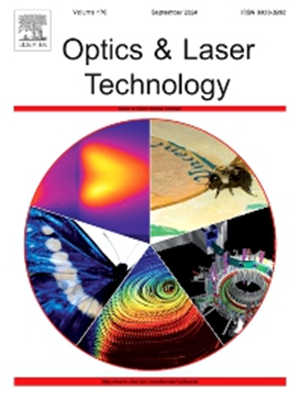Crack characteristics of pulsed laser brazed diamond grinding wheel
Abstract
Experiments on pulsed laser brazing of diamond grinding wheels were carried out in this paper. The crack characteristics and residual stress of brazed layer were detected and evaluated. The influence laws of pulse width, frequency, diamond mixing ratio, number of stacked layers, powder thickness and preheating temperature on crack characteristics were investigated. The pulsed laser characteristic coefficients (peak pulse power density/pulse interval time) and the correlation law between thermal stresses and cracks are discussed. The results show that the pulse width and frequency of the pulsed laser affect the cracking rate by varying the energy input and the time between pulses. The existence of a suitable value for the pulse characteristic coefficient corresponding to pulse width and frequency corresponds to a lower cracking rate. Thermal stress variations due to changes in process conditions at different diamond percentages, number of stacked layers, and preheating temperatures are the main causes of crack rate variations. Cracking is not only affected by thermal stresses, but also by the quality of the formed surface when pulsed laser brazing diamond to nickel–chromium alloy brazing material. For example, the main reason for the variation in cracking rate is the change in the morphology of the molded surface due to the variation in the thickness of the powder spread at different variations in the thickness of the powder spread.

 求助内容:
求助内容: 应助结果提醒方式:
应助结果提醒方式:


